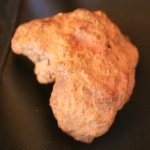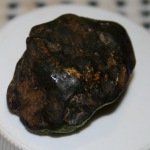Gold Facts - What is Gold?
Why a Basic Knowledge About Gold is Crucial
If you have found lots of gold this page about gold facts may seem irrelevant, but, if you are just starting out to find the "Big One' this is essential information.
So - What are the Important Gold Facts and
... how do I identify gold?
(Here is an important 7 point checklist to make sure you never miss gold again!)
Gold Facts and Characteristics
The chemical symbol for gold is Au.
The Specific Gravity of Gold is 19.3
IS THAT IMPORTANT?
That information is important for identification of gold and some methods of extracting gold from other material!
Pyrite has a specific gravity of 4.9 to 5.2 and Mica 2.7 to 3.4.
Specific gravity is a measure of relative density - the ratio between the weight of a substance and weight of an equal volume of water at 4 degrees C (39 degrees F) - The Specific Gravity of Water at 4 Deg C is 1.0.
Because it has a very high SG compared to other minerals and elements that may at first sight be confused with gold...
e.g. a yellow or brassy coloured mineral such as pyrite...
This makes Gold easier to identify.
The SG is important to the methods of extracting gold such as panning and dryblowing which are based on the separation of gold out from other material with lower specific gravity.
Pyrite has a SG of 4.9 to 5.2 and Mica 2.7 to 3.4 so in the panning dish the gold will quickly find its way to the bottom compared to these two minerals.
Later when we discuss panning or dryblowing you will see why this is important information.
AND... It will give you more confidence when you are identifying gold.
Gold also has a defined streak colour which is yellow or gold
Streak is obtained by rubbing the mineral across an unglazed white tile)
Gold steak is yellow or gold,
Mica is colourless
Pyrite is Greenish black
Gold is malleable
That means that gold can be hammered and flattened without shattering.
Pyrite and mica will shatter when struck with a hammer.
The melting point of gold is 1063 degress C.
Gold has a hardness measurement of 2.5 to 3 on Mohs Scale
Mohs scale of hardness is a scale of 1 to 10 where 1 is talc and 10 is diamond.
On the scale Quartz has a hardness of 7, pyrite 6 to 6.5 and Mica 2.7 to 3.4.
How do You Identify Gold in the Field?
It is actually quite easy and once you have found gold you "know" if a yellow mineral you have found is gold.
However for smaller gold or other yellow minerals we have included a Seven Point Test Checklist which will help you identify whether a piece is gold or not.
Be very Careful in WA when you are metal detecting if it is in an area of gravel or ironstone.
It is common to have gold completely encased in gravel or ironstone so it just looks like an ordinary rock
TEST EVERYTHING that registers on the metal detector.
Crack Ironstone rocks open, scrape the outside of rocks or dolly them and pan the crushed rock to ensure that the rock is not gold covered by an outer layer of some other rock material.
 Gold in Gravel found at Cue WA
Gold in Gravel found at Cue WA Gold in Ironstone found at Halls Creek WA
Gold in Ironstone found at Halls Creek WAReturn From Gold Facts, page. to Home Page
![[Most Recent Gold Price Quotes in Australian $]](https://www.kitconet.com/charts/metals/gold/t24_au_en_auoz_2.gif)
![[Most Recent Gold Price Quotes in US $]](https://www.kitconet.com/charts/metals/gold/t24_au_en_usoz_2.gif)